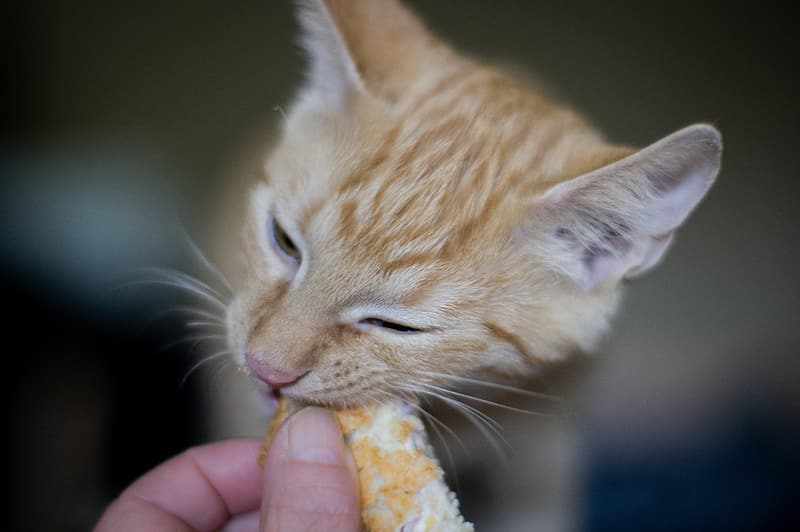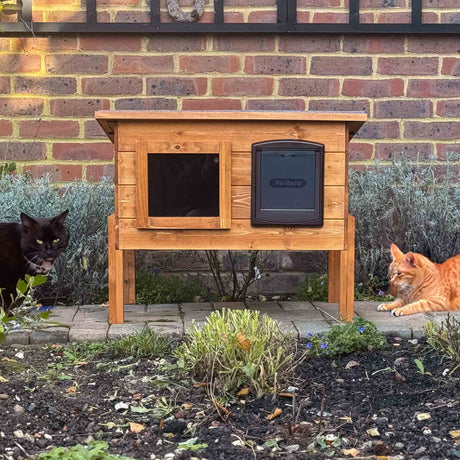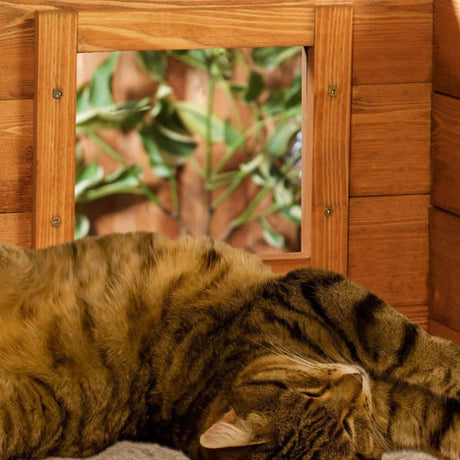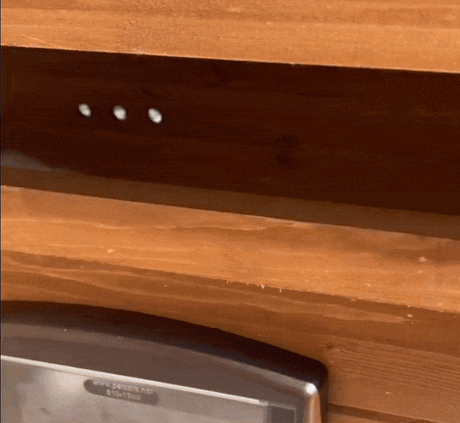Approximately, the UK has around 12.5 million pet cats and, unfortunately, a quarter of a million stray cats. And the problem shows no signs of abating. Cats can find themselves homeless for a number of reasons, including abandonment, or getting lost during or after a move. Whatever the circumstances, it is crucial that you know what to do with a stray cat.
The Difference Between A Stray Cat And A Feral Cat
As much as you may want to help every homeless cat you find, you must know the difference between a stray cat and one that is feral.
What is a Feral Cat?
Feral cats have had little to no interactions with humans, and prefer it that way. They live in communities or colonies with other feral cats, and on the whole, can take care of themselves.
Feral cats are:
- Unsocialised: A feral cat finds people threatening and will avoid them at all costs. They are not friendly and won't venture near, even if coaxed.
- Live with other feral cats: Unlike lost or stray cats that can be found wandering on their own, feral cats live in colonies.
- Found in unpopulated areas: Feral cats will set up homes or find shelter in unpopulated areas, away from people. Lanes and alleyways with access to food is usually a good spot.
- Missing an ear tip: This might seem a little odd, but you can identify a feral cat by a missing ear tip. This is known as trap-neuter-return (TNR) and is an initiative to manage population growth.
- Not microchipped: Although you won't know it by just looking at it, feral cats are not microchipped.
 What is a Stray Cat
What is a Stray Cat
A stray cat is one that has been socialised and is used to interacting with people. Outdoor domesticated cats can be mistaken for strays, but there are a few noticeable differences.
Stray cats are usually.
- Found near homes: Unlike feral cats, strays can be found wandering around homes and in neighbourhoods. Because they're not able to fend for themselves, they'll be looking for food near people.
- Used to people: Strays might be shy at first, but they are used to humans and will eventually respond to a call, or bowl of food.
- On their own: While feral cats live in colonies, stray cats will be on their own
- Microchipped: While it’s not (yet) a legal requirement in the UK to have your cat microchipped, many responsible cat owners have chosen to do this. If the stray is a lost pet, you will be able to trace its owners by checking the microchip.
What To Do With A Stray Cat
Once you have established that the cat is a stray, there are a couple of things you can do to help locate its owner, rehome it or, if you're able to, foster it yourself.
Print a paper collar.
If you notice a stray cat in your area, you could try to locate its owner with a paper collar. Simply print out this handy template and put your contact number in the allocated space. When placing the collar on the cat, make sure there are at least two fingers between its neck and the collar.
If you’re unable to locate the cat’s owner via this method, you can contact your local cats protection branch for further information.
Ask your neighbours
It is always worth asking your neighbours if the stray belongs to them. Because cats are wanderers, don't forget to check with the houses a few streets away.
Put up posters
Another effective way of reuniting a cat with its owners is by making a poster. These can be put up in your local store, at community centres, town halls, parks, as well as around the neighbourhood. You could also post it on your local Facebook page, or if you prefer, use an app to help locate its owners.
Check for a microchip
If you are still unable to find the owner, take the cat to your local vet or rescue centre. They will be able to check if he has been microchipped. If there is no chip, they will be able to look at their records for any reported missing cats. The same applies to rescue centres.
Provide a temporary home
If the cat is comfortable with you, you might want to consider giving him a temporary home while you look for his owner. And don’t worry if your home isn’t cat-proof, there are some great outdoor houses available that are comfortable and safe for your new tenant.
Of course, if you are unable to provide temporary shelter for the cat, your local vet should be able to care for it until he is reunited with his owners. If necessary, they will be able to rehome the cat.
What To Do When Fostering or Adopting a Stray Cat
If a stray has taken a shine to you, and you have done everything possible to locate their owner, you could consider giving them a forever home yourself. Although it is a fairly straightforward procedure, there are a few things you need to do before making the cat a part of the family.
Take the cat for a medical checkup
Even if the cat looks healthy, it is a good idea to take it to the vet for a thorough examination. Chances are that he has been exposed to all sorts of pests, including ticks, fleas and parasites that could make you and your other pets ill. While there, your vet can also give him deworming medicine along with any overdue vaccinations.
Check if the cat is neutered or spayed
One of the most important things you can do is check if the cat has been spayed or neutered. This simple procedure has various health benefits for the cat and helps with the problem of overpopulation. It also stops male cats from roaming the streets and marking their territory in your house.
Helping your cat adjust to its new life
A stray cat can be rehomed, although it might take some time and patience for him to readjust to his new life as a pet. Depending on how long the cat has been living outdoors, you might need to retrain him to use the litter box and even interact with people.
In the beginning, It is a good idea to keep him in one room, away from other pets and small children, so that he doesn't feel overwhelmed or threatened. Creating a cosy spot in the corner of the room, and spending a few hours a day with him will help him settle in quickly.
Feeding your new cat
Life on the streets is tough for a stray cat, so it's going to take time for the cat to adjust to ordinary things, like regular meals. A rehomed stray will often overeat, or eat too quickly. To stop this happening, you can try to give the cat smaller portions or feed them by hand. If the cat doesn't want to eat at first, don't panic. Perseverance is key. And always make sure they have access to clean water.
 Getting your cat used to its new home
Getting your cat used to its new home
It is a good idea to keep the cat indoors, where you know he is safe. It is completely normal for him to take time to adjust to their new surroundings but hang in there. They might display some odd behaviour at first, including hiding under furniture, or behind curtains.
What To Do If You Find A Litter of Kittens
Although it is tempting to rescue a litter of kittens, there are a few things you should, and shouldn’t do.
Try to locate their mother
From a safe distance, watch the kittens and see if there is any sign of their mother. Keep in mind that she may be frightened by your presence, and is staying away even if she is close by.
Don’t touch the kittens
As cute as they are, don't touch or handle the kittens. Any kind of interference may deter the mum from returning and caring for the litter.
Contact a rescue centre
If after a few hours the mother still hasn’t come back, the kittens are going to need to be taken in. Contact your local rescue centre to assist with the kittens. Remember to give them as much information as possible, including:
- Where you found the kittens
- Whether or not the mum is there
- How many kittens are in the litter and how big they are
Don’t keep the kittens
As much as you might like to keep the kittens, we suggest you don’t. Feral kittens can be rehomed, but they will need to be checked by a vet, get vaccinated and wormed. They will also need to be neutered before being put up for adoption.
Our Checklist For What To Do With A Stray Cat
If you have found a stray cat and want to know what to do, take a look at our checklist. These are quick, actionable steps you can follow to help reunite the cat with his owners, rehome it or trap, neuter and return it to the community.
- Check if it is a stray cat or a feral cat: It is essential that you establish that the cat is, in fact, a stray, and not feral. You also need to make sure the cat doesn't belong to anybody.
- Ask your neighbours: Check if the cat belongs to your neighbours before doing anything else.
- Take the cat to the vet if it is sick or injured?: If the cat looks sick or is injured, contact your local rescue centre or take it to the vet.
- Check if the cat has a tag?: Check to see if the cat is wearing a tag or collar. If you can’t see any kind of identification, your vet can scan it for a microchip.
- Spread the word: Make a poster that can be put up in the neighbourhood. Also, post a photo of the cat, along with a description of it on Facebook. If you are on Twitter, ask your followers to retweet the picture and description.
- Provide it with a temporary home: While you wait for the owner, consider giving the cat a temporary home. If you are unable to do this, contact your local rescue centre or speak to your vet. They will look after the cat, and rehome it if necessary.
You can, if all else fails, adopt the cat yourself. Before you do this, we recommend you check with your local rescue centre whether there are any regulations in place that might make it illegal for you to take the cat in. You could also consider becoming a volunteer at a local rescue centre. With the growing number of stray and feral cats in the UK, extra help is always welcome.
Before you go, did you find this article helpful? Perhaps you have experience with stray cats that you would like to share with us? Maybe you have reunited a cat with its owner, or maybe given one a new home? Tell us all about it in the comment section below.







